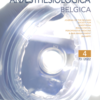The observance of evidence-based guidelines for the prevention of postoperative nausea and vomiting is difficult in daily practice of an academic hospital – a retrospective cohort study
Postoperative nausea or vomiting (PONV) ; evidence-based medicine
Published online: Jun 28 2019
Abstract
Background: Postoperative nausea and vomiting (PONV) are one of the most frequent side effects after anesthesia. Recent guidelines suggest the systematic preoperative calculation of the simplified Apfel score (AS) and a multimodal prophylactic approach in high-risk patients.
Objectives : Our primary goal is to evaluate the use of prophylaxis against PONV in laparoscopic gynae- cological surgery patients after the introduction of an algorithm. Our secondary objectives are to assess the quality of the AS calculation and the prevalence of PONV after the introduction of the algorithm and, to determine specific risk factors of PONV in our population, in order to improve the prophylactic strategy.
Design and setting : Retrospective cohort study of 252 consecutive female patients scheduled for elective laparoscopic gynecological surgery in a tertiary academic hospital between January and August 2016.
Main outcomes measures: The administered prophylaxis and the observance to the institutional algorithm, the rate of AS calculation in consultation and its quality, the prevalence of early-, late- and 24h-PONV and specific population risk factors of PONV.
Results : Twenty-one percent of patients received the recommended prophylaxis, 1% was over-treated, and 78% were under-treated. AS was recorded for 233 patients (92%). 195 AS (84%) were underestimated because the “postoperative morphine use” item was not checked. The most commonly used drug for prophylaxis was propofol (68%). 26% of patients experienced 24h-PONV. Postoperative morphine use was identified as an independent risk factor for 24h-PONV (p<0.0001), early-PONV (p=0.005) and late-PONV(p=0.007). Dose of ketamine (p=0.01) was also identified as a risk factor for 24h-PONV.
Conclusions : This study demonstrates the difficulties with the implementation of evidence-based guidelines for the preventive management of PONV in daily practice of a tertiary academic hospital. Further studies are needed to evaluate the role of professional-oriented interventions such as feedback or reminder in improving the implementation of evidence-based medicine.
